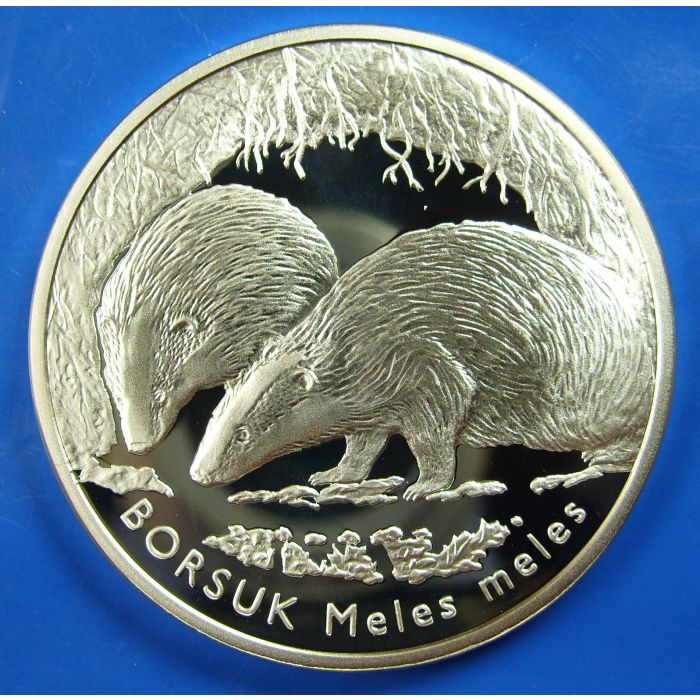Poland 20 Zlotych 2011 Eurasian Badgers, (Meles meles)
€49.00
In stock
SKU
pl6078
pl6078 Poland 20 Zlotych 2011 Y#763 Eurasian Badgers - Silver / Proof
| Catalog No. | Y# 763, N# 49436 |
|---|---|
| Material | Silver |
| Send by Registered Mail | Yes |
| Type | Wildlife |
| Value | 20 Zlotych |
| Year | 2011 |
A 20 PLN silver collector coin belonging to the most popular series issued by the National Bank of Poland ’’Animals of the World’’.
Obverse:
An image of the eagle established as the national emblem of the Republic of Poland. Below the eagle, the notation of the year issue: 2011, below an inscription: ZŁ 20 ZŁ. On the sides of the Eagle stylized images of the national flag of the Republic of Poland. Above, semicircular inscription: RZECZPOSPOLITA POLSKA (REPUBLIC OF POLAND). Under the left leg of the eagle the symbol of the mint: M/W.
Reverse:
In the central part, a stylized image of two badgers in the burrow. At the bottom, from left to right, a semicircular inscription: BORSUK Meles Meles (BADGER)
Obverse designer: Ewa Tyc-Karpińska
Reverse designer: Grzegorz Pfeifer
A badger is a massive animal with an elongated neck and a characteristic coloring of its head. Its strong legs are finished with long claws, back and sides of its body has silvery-grey color and legs - black. A Badger has a white snout and forehead, small, dark ears with white edges. On both sides of its head there are black, wide streaks. Badgers are found in much of Eurasia as well as Jordan, Israel, Syria and Iran. In Europe, the do not live in the north parts of Scandinavia, on the islands in the Mediterranean Sea and in the north of the European part of Russia.
In Poland, badgers live in family groups consisting of a couple or a few of adult animals and the offspring. In different areas of the country, a family group consists of 3.5 up to 4.7 badgers and the young ones make up 40-55% of the population. In West Europe, social groups of badgers are larger than in Poland; they may include several or even over 30 animals.
A group of badgers occupy family areas of different sizes: from several to 20 km2. Family areas are separated or overlap to some degree. In field and forest mosaic in central Poland, the size of these areas changes seasonally: they are quite small in spring, increase in summer and early autumn as the badgers start to come out from the forests and eat fruit from orchards. In the late autumn, they limit their activity to the nearest surrounding of the main burrow.
In natural forests, e.g. in Białowieża Forest, their nourishment in spring consists of earthworms and, in summer and autumn, of earthworms as well as amphibians. In the areas of field and forests mosaic, the food is more diverse. Even though earthworms dominate, in summer, fruit, corn and small rodents are more important ingredient.

